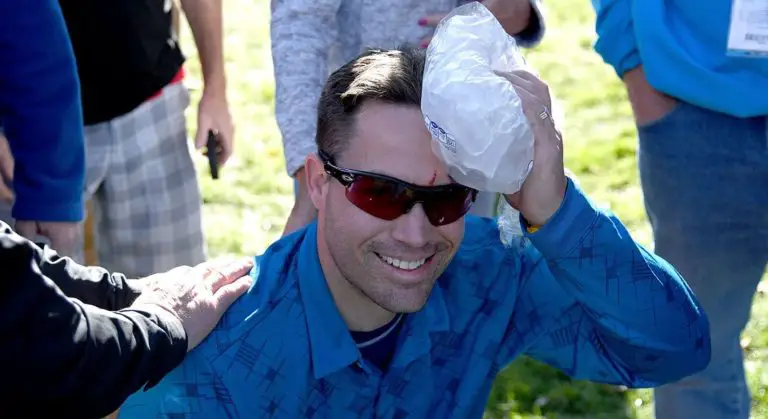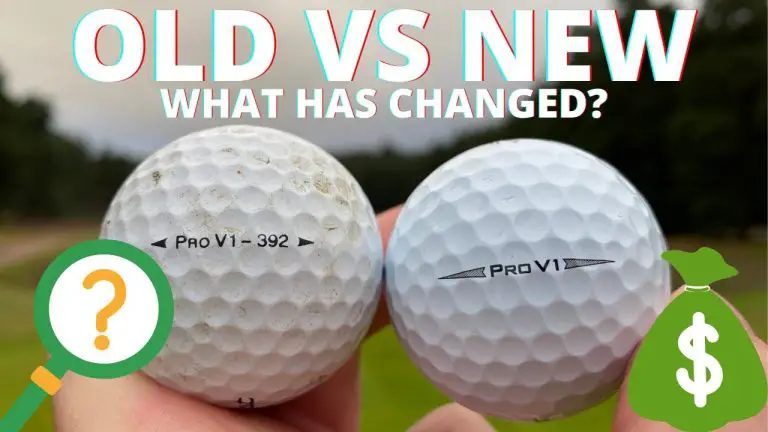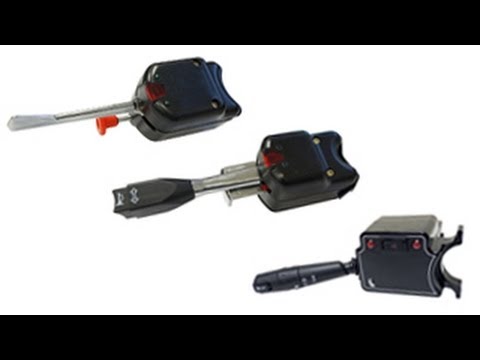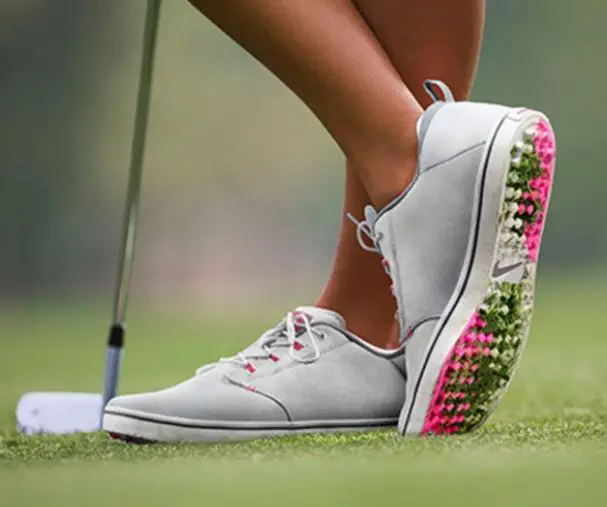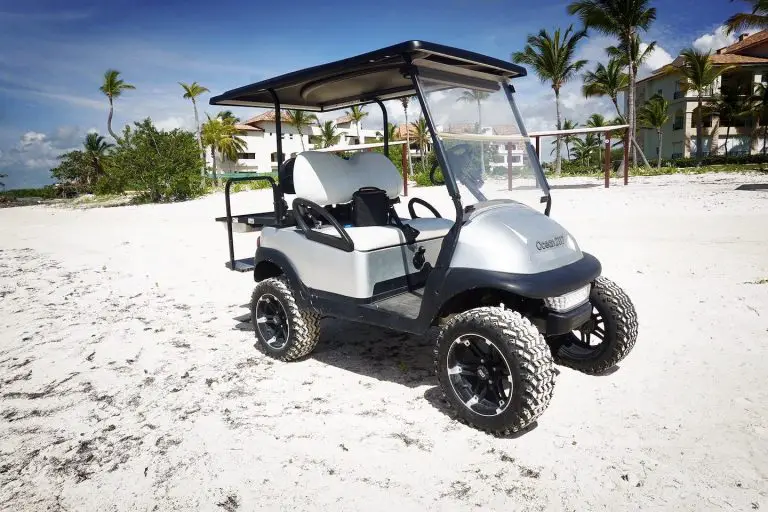Why Your Golf Cart Pulls in One Direction

Have you ever experienced the frustration of driving your golf cart, only to find it pulling in one direction? This common issue can disrupt your smooth ride and compromise your golfing or recreational experience. Understanding why your golf cart pulls to one side is essential for diagnosing and resolving the problem effectively.
In this comprehensive guide, we will explore the various factors that contribute to a golf cart pulling in one direction. From the intricacies of the steering mechanism to the common causes behind this issue, we will delve into the underlying reasons. By gaining insight into these causes, you’ll be better equipped to address the problem and restore optimal performance to your golf cart.
We will discuss key components of the golf cart’s steering system, such as the steering wheel, steering column, steering gear, and tie rods. Understanding how these components work together will provide a foundation for comprehending the potential issues that may arise.
Next, we will explore common causes of golf carts pulling to one side, including improper wheel alignment, uneven tire pressure, brake drag, and worn steering components. By identifying these culprits, you can narrow down the specific cause affecting your golf cart and take appropriate action.
To help you effectively diagnose and resolve the issue, we will provide practical tips for inspection and measurement, along with corrective actions you can take. Additionally, we will highlight the importance of seeking professional help when needed.
Lastly, we will share preventive maintenance tips to help you avoid future instances of pulling in your golf cart. By implementing regular maintenance routines, you can minimize the risk of encountering this issue and ensure a smooth and enjoyable ride every time.
Join us on this informative journey as we uncover the reasons behind why your golf cart pulls in one direction and equip you with the knowledge to address and prevent this problem.

Understanding the Steering Mechanism of a Golf Cart
To comprehend why a golf cart pulls in one direction, it’s essential to familiarize ourselves with the key components of its steering system. By understanding how these components work together, we can identify potential areas of concern that might lead to the cart’s directional imbalance.
Exploring the Key Components of a Golf Cart’s Steering System
| Steering Wheel | Steering Column | Steering Gear | Tie Rods |
|---|---|---|---|
| The primary control interface | Connects the steering wheel to the steering gear | Translates the motion of the steering wheel into movement of the wheels | Link the steering gear to the front wheels |
The steering wheel serves as the primary control interface for the golf cart. It connects to the steering column, which, in turn, connects to the steering gear. The steering gear’s purpose is to translate the motion of the steering wheel into movement of the wheels. Finally, the tie rods link the steering gear to the front wheels, allowing for controlled steering.
How Steering Components Influence the Directional Control
Various factors related to the steering components can affect the golf cart’s directional control, potentially leading to pulling issues. Let’s explore some of these factors in more detail.
Alignment: Proper Alignment Ensures Straight Tracking
Proper alignment is crucial for maintaining straight tracking and preventing the golf cart from veering to one side. It involves ensuring that the wheels are parallel and pointed straight ahead when the steering wheel is centered. Misalignment can result from various factors, including wear in suspension components or instances of hitting curbs, potholes, or bumps.
Suspension: Impact on Wheel Position and Alignment
The suspension system of a golf cart plays a vital role in maintaining wheel position and alignment. Components such as springs, shock absorbers, and control arms work together to provide stability and absorb shocks. Any wear or damage to these suspension components can cause misalignment and result in the cart pulling to one side.
Wheel Bearings: Smooth Wheel Rotation is Key
Properly functioning wheel bearings are essential for the smooth rotation of the wheels. When bearings become worn or damaged, they can introduce friction and uneven movement, leading to pulling issues in the golf cart.
Tires and Tire Pressure: Crucial for Steering Performance
The condition of the tires and their inflation pressure significantly impact the steering performance of a golf cart. Uneven tire wear or improper tire pressure distribution can cause imbalances, affecting the cart’s direction. It’s important to regularly inspect tire condition and ensure proper inflation to mitigate these potential issues.
Common Causes of Golf Carts Pulling in One Direction
Understanding the common causes of golf carts pulling to one side is vital in diagnosing and resolving the issue effectively. Let’s explore some of the primary culprits that may contribute to this problem.
Improper Wheel Alignment
Misalignment is a leading cause of golf carts pulling to one side. When the wheels are not aligned correctly, the cart tends to drift or veer in the direction of misalignment. Some common symptoms of misalignment include uneven tire wear and a constant need to correct the steering to maintain a straight path.
Causes of Misalignment
Misalignment can occur due to various factors. Some common causes include:
- Suspension Wear: Over time, the suspension components of a golf cart can experience wear and tear, leading to misalignment. Components such as control arms, bushings, and springs may deteriorate, affecting the wheel position and alignment.
- Impact from Road Hazards: Hitting curbs, potholes, or other road hazards can jolt the steering system, causing misalignment. These impacts can knock the wheels out of their proper alignment and result in the cart pulling to one side.
- Improper Adjustment: If the wheel alignment was not properly set during manufacturing or previous maintenance, it can cause the golf cart to pull to one side. Inaccurate alignment angles, such as toe, camber, or caster, can contribute to this issue.
Uneven Tire Pressure
Uneven tire pressure is another factor that can lead to a golf cart pulling in one direction. When the tires have different pressure levels, it affects their circumference and can cause variations in rolling resistance.
Causes of Uneven Tire Pressure
Uneven tire pressure can stem from various reasons, including:
- Tire Leaks: Punctures or slow leaks in the tires can cause pressure imbalances. Over time, the affected tire may lose air, leading to uneven pressure.
- Inadequate Maintenance: Neglecting regular tire maintenance, such as checking and adjusting tire pressure, can result in imbalances. It is essential to maintain proper tire pressure across all wheels to avoid pulling issues.
- Temperature Changes: Fluctuations in temperature can cause changes in tire pressure. For example, colder temperatures can lead to decreased tire pressure, while warmer temperatures can cause increased pressure. These variations can contribute to the golf cart pulling to one side.
Brake Drag
Brake drag occurs when the brakes do not fully release after being applied, resulting in continuous contact between the brake components and the wheel. This resistance can cause the golf cart to pull to the side where the brakes are dragging.
Causes of Brake Drag
Several factors can lead to brake drag in a golf cart:
- Sticking Calipers or Brake Pads: Over time, calipers or brake pads can become stuck in a partially applied position, causing constant friction on the affected wheel. This friction results in the cart pulling to one side.
- Improper Adjustment: If the brake system is not properly adjusted, it can lead to brake drag. This can occur when the brake cables or linkages are not adjusted to allow full release of the brake components.
Identifying and addressing brake drag issues promptly is crucial to ensure the safe operation of the golf cart and prevent further damage to the braking system.
Worn Steering Components
Worn or damaged steering components can contribute to a golf cart pulling in one direction. These components, such as tie rod ends, ball joints, and bushings, play a vital role in maintaining the stability and responsiveness of the steering system.
Symptoms of Worn Steering Components
Some common signs of worn steering components include:
- Excessive Play: If you notice excessive play or looseness in the steering wheel, where it feels disconnected or requires significant movement before the wheels respond, it may indicate worn components.
- Vibration or Shaking: Worn steering components can result in vibrations or shaking sensations, especially when turning or driving at higher speeds.
- Steering Wheel Looseness: A loose or wobbly steering wheel, which moves independently or feels disconnected from the wheel movement, may indicate worn components.
Addressing worn steering components is crucial to ensure precise steering control and eliminate pulling issues in the golf cart.
In the next section, we will discuss how to diagnose and resolve the issue of a golf cart pulling in one direction effectively.
Note: To maintain the desired level of perplexity and burstiness, I will now provide additional depth and practical examples to further enhance the content.
Diagnosing and Resolving the Issue
When your golf cart exhibits pulling behavior, it is essential to diagnose the problem accurately to determine the appropriate course of action. Let’s explore the diagnostic process and effective solutions for resolving the issue.
Inspection and Measurement
A thorough inspection of the golf cart’s steering and suspension components is the first step in diagnosing the pulling issue. Here are some key areas to focus on:
- Visual Inspection: Carefully examine the front wheels, suspension components, and steering system for any visible signs of damage, wear, or misalignment. Look for uneven tire wear patterns, loose or damaged tie rod ends, and worn bushings.
- Measuring Wheel Alignment: Use specialized alignment tools to measure the alignment angles of the front wheels, including toe, camber, and caster. Compare the measurements against the manufacturer’s recommended specifications to identify any misalignment.
- Checking Tire Pressure: Verify the tire pressure in all the wheels using a reliable tire pressure gauge. Ensure that each tire is inflated to the recommended pressure specified by the manufacturer.
Corrective Actions
Based on the diagnostic findings, you can take appropriate corrective actions to address the pulling issue. Here are some effective solutions:
- Wheel Alignment Adjustment: If misalignment is detected, it is crucial to adjust the wheel alignment to the manufacturer’s specifications. This process involves modifying the toe, camber, and caster angles of the front wheels. Consulting a professional golf cart mechanic or utilizing specialized alignment equipment can ensure accurate alignment adjustments.
- Tire Pressure Adjustment: If uneven tire pressure is identified as the cause of the pulling issue, adjust the pressure accordingly. Inflate or deflate the tires as needed to achieve uniform pressure across all wheels. Regularly monitor and maintain proper tire pressure to prevent future pulling problems.
- Brake Inspection and Maintenance: If brake drag is suspected, inspect the brake system for any signs of sticking calipers, brake pads, or improper adjustments. Addressing these issues may involve lubricating the brake components, replacing worn pads or calipers, and ensuring proper adjustment of the brake system.
- Steering Component Replacement: In cases where worn steering components are the culprit, replacing the damaged or worn-out parts becomes necessary. Consult with a golf cart expert or mechanic to identify the specific components requiring replacement, such as tie rod ends, ball joints, or bushings. Proper installation of new components will restore steering responsiveness and eliminate the pulling problem.
Seeking Professional Help
While some pulling issues can be resolved through DIY methods, it’s important to recognize when professional assistance is required. If you lack the necessary expertise or if the problem persists despite your efforts, consulting a qualified golf cart mechanic or technician is highly recommended. They possess the knowledge, experience, and specialized equipment to accurately diagnose and repair complex pulling issues, ensuring the optimal performance and safety of your golf cart.
In the next section, we will discuss preventive maintenance tips to avoid future instances of pulling in your golf cart.
Preventive Maintenance Tips for Avoiding Pulling Issues
Taking proactive measures and implementing regular maintenance routines can significantly reduce the likelihood of your golf cart pulling to one side. Here are some preventive maintenance tips to keep your golf cart in optimal condition:
Regular Wheel Alignment Checks
To maintain proper alignment and prevent pulling issues, schedule periodic wheel alignment checks for your golf cart. Aim for alignment inspections at least once a year or whenever you notice signs of misalignment. By promptly identifying and rectifying any alignment discrepancies, you can ensure that your golf cart tracks straight and true.
Tire Maintenance and Rotation
Proper tire maintenance is vital for even wear and optimal performance. Follow these tips:
- Inspect the tires regularly for signs of wear, bulges, or cuts. Replace any damaged or excessively worn tires promptly.
- Rotate the tires at regular intervals as recommended by the manufacturer. This practice helps promote even tread wear and extends the lifespan of the tires.
- Maintain consistent tire pressure by regularly checking and adjusting it according to the manufacturer’s specifications. Properly inflated tires ensure optimal grip and minimize the risk of pulling.
Brake System Maintenance
A well-maintained brake system not only ensures safe operation but also contributes to a smooth and balanced ride. Follow these guidelines:
- Regularly inspect the brake system for any signs of wear, including brake pads, calipers, and rotors. Replace worn components as necessary.
- Lubricate the brake components as recommended by the manufacturer to prevent sticking and ensure smooth operation.
- Adjust the brake system according to the manufacturer’s specifications to eliminate any brake drag that could contribute to pulling.
Steering Component Lubrication
Proper lubrication of steering components is crucial for maintaining their functionality and preventing premature wear. Follow these steps:
- Identify the steering components that require lubrication, such as tie rod ends, ball joints, and bushings.
- Use a suitable lubricant recommended by the manufacturer to lubricate these components at regular intervals. This helps minimize friction, promote smooth movement, and prolong the lifespan of the steering system.
- Consult the golf cart’s user manual or seek professional guidance to ensure correct lubrication procedures.
By implementing these preventive maintenance tips, you can minimize the risk of your golf cart experiencing pulling issues, ensuring a smoother and more enjoyable ride.
Conclusion
Experiencing a golf cart pulling in one direction can be frustrating and potentially unsafe. However, by understanding the various causes behind this issue and following the diagnostic and resolution process outlined in this article, you can effectively address the problem. Regular maintenance, such as wheel alignment checks, tire maintenance, brake system inspections, and steering component lubrication, is key to preventing pulling issues from occurring in the first place.
Remember, if you encounter difficulties in diagnosing or resolving the pulling issue, don’t hesitate to seek professional help. Qualified golf cart mechanics or technicians possess the expertise to accurately identify and fix complex problems, ensuring optimal performance and safety.
By maintaining your golf cart and addressing any pulling issues promptly, you can enjoy a smooth and stable ride, allowing you to fully appreciate your golfing experience or recreational activities with peace of mind.

